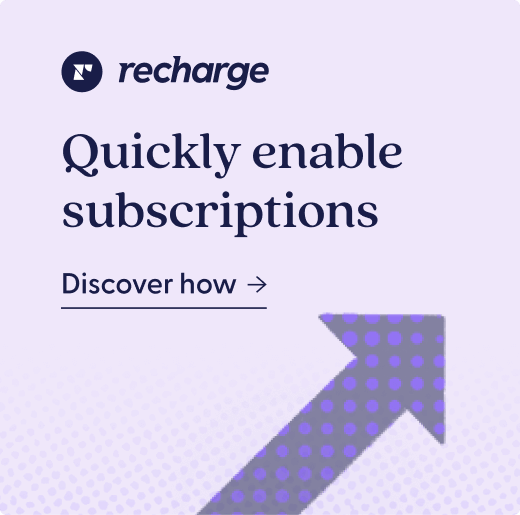Migrating your subscribers from one platform to another might seem like a daunting task. Maybe it’s held you back from even considering migrating, if you’re dissatisfied with the current subscription management software you’re using now. But, selecting the right subscription management platform for your business is an integral part of achieving success with subscriptions.
This blog post will show you that migrating doesn’t have to be a huge headache—and that other businesses have migrated and found huge success with their new subscription management solution.
Key takeaways
- Migrating your subscribers to a new platform doesn’t have to be a headache with the right plan of action.
- If your current subscription platform isn’t fit for meeting your business goals, migrating to a new platform might be the right solution.
- Merchants have found success migrating with zero downtime, and better results after migration.
Why migrate?
There are a wide variety of reasons a subscription business might be considering migrating. You could be looking for more features and integrations, or in need of better analytics to help you achieve your business goals. Or maybe your current platform is lacking the support you need. Whatever your reasoning, migrating to a new subscription platform could be the key to getting the results you want for your business.
If you’re considering migrating, ask yourself these questions:
- Does my current platform support my business goals?
- Does it integrate with the ecommerce platforms I use? (Shopify, Big Commerce, etc.)
- Does my subscription platform allow for me to go headless if I want?
- Do I have the right data and analytics to make informed decisions?
- Is support available from my subscription platform when I need it?
- Are there tools and integrations available that help me streamline my processes?
- Can this platform scale with me as my business grows?
- Am I happy with the user interface on this platform?
The right subscription management solution should support you and help you achieve all of your business goals.
What does migration involve?
When migrating, you’ll have to communicate with both your current and your future platform to ensure customers aren’t charged twice and that all the necessary steps are completed on both ends. You should be provided with a migration plan or a checklist from both entities, which will ensure the process goes smoothly.
To migrate, you’ll need all the necessary subscriber data, including subscription information from the former platform and any payment tokens from the payment processor. To learn more about migrating, continue reading below.
3 steps for a seamless migration
The migration process can be divided into three simple steps: Install or setup with your new platform (in this case, we’ll use Recharge as an example), compile customer and payment data, then import the data and ensure everything imported smoothly. As mentioned, you’ll need to communicate with both your current and your future subscription solution provider to make migration as seamless and problem-free as possible.
1. Install Recharge
The first step is to set up Recharge. Thankfully, onboarding with Recharge is a simple process, and launching can be done in just two steps. Merchants who are migrating to Recharge will have a team of specialists at their disposal during the migration. They’ve completed hundreds of successful migrations, and have all of the tools, documentation, and support you’ll need for a smooth migration.
2. Compile customer data & payment data
One of the most important components of migrating is to ensure you have all the necessary data for your subscribers. This includes your customers’ subscription information from the old platform, as well as any payment tokens from the payment processor. Collecting this data is critical for ensuring that all the critical subscription data makes its way over to the new platform.
Once the data has been compiled, be sure to include a period for data validation. Verifying the data to make sure that there are no errors is crucial before importing everything.
3. Bulk import your data & ensure your data has been imported correctly
The final step: import your data! This is, of course, the meat of the migration process. Once you’ve imported the data, it’s best to go through a post-migration checklist (typically provided to you by your new platform) to make sure everything looks accurate and is set up to run smoothly. Then, you’re ready to start processing orders on your new platform.
Recharge merchants who have found success migrating
If you’re still unsure about migrating your subscription business, or worried about downtime, it can be helpful to read success stories from merchants who have migrated to your chosen provider. Below, read about merchants who migrated to Recharge and have been successful ever since—thanks, in part, to a smooth migration process.
Wohven
Wohven offers a monthly subscription of men’s quality essentials, such as t-shirts, socks, and boxer briefs, at a better price than most retailers. They wanted to move away from their former subscription platform to find one that better accommodated their unique business model.
Within a few weeks, thanks to the help of Recharge’s migration team, Wohven had their new store and subscription products launched on Shopify. They had zero hours of downtime during the migration, making it easy for them to complete the migration without disrupting any of their subscribers.

Primal Blueprint
The health and wellness brand Primal Blueprint, based on author Mark Sisson’s best-selling book, is focused on cultivating lifelong wellness. It makes sense then, that they would want to offer subscriptions to promote consistent, healthy living for their customers.
Through partnering with Above Market for web design and development, Primal Blueprint was able to successfully migrate more than 3,700 subscribers to the Recharge platform. Throughout the migration, not a single line of data was misplaced and they were able to make the transition smoothly, without losing any customer trust. After the migration, their subscription sales volume increased to two times more than non-subscription sales.

Planning for a smooth migration
Completing a migration from one subscription platform to the next is possible without your customers even knowing the difference. By ensuring all data is accurately carried over, with a strong migration plan in place from both platforms, you can successfully transition to a subscription management solution that better supports your business goals and needs.
Sources
[1] How to choose your subscription management solution (Recharge)
[2] Subscription management 101: Optimizing your business for experienced subscription merchants (Recharge)
[3] How do you migrate to another subscription platform? (Recap with Recharge)
[4] Merchant HQ (Recharge)
[5] Migrated to Recharge with 0 storefront downtime (Recharge)
[6] Subscription sales dwarf one-time purchases 2:1 (Recharge)



